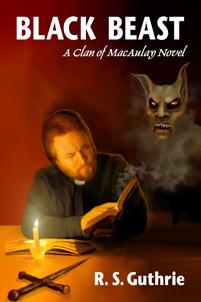A Kid Goes (Chris) Baty
I wrote my first book when I was 10 years old. Sure, it was only five hand-written pages long, but I added a few illustrations, bound it in poster board, and spent a few hours with my colored pencil set to create the cover art. As far as I’m concerned, that’s officially a book. I had writer’s block for a couple years, but in the summer between 7th and 8th grade, I wrote another story. This one was fifty or so hand-written pages. I bound it, illustrated it, and also considered it a book—the first in a series, with the second written near the end of the school year. More writer’s block (or maybe it was that I started to notice girls) but I finally wrote a third book my junior year of high school.
Those stories were all mysteries. I love reading mysteries but I found that I don’t love writing them, and so I now write horror and dark fantasy. I wrote about that transition in a previous post. What I need to talk about here is my process for writing those early books.
Each youthful day I spent writing one of those books, I set a goal for myself of one page per day. Many days saw two or three pages, but no matter what else was happening, I absolutely refused to stop before at least one page was turned over onto the stack. I was sometimes a few minutes late to the dinner table, and I missed the beginning of The Dukes of Hazard and The Incredible Hulk once or twice. These were the sacrifices I had to make if I was to finish my books.
Adolescent and adult life happened. Girlfriends. The track team. College. Perhaps, a party or three. Career. Volunteer work. More college. A new career. And on and on. I let the writing goals slide. Then I purchased a book, and those goals were brought back to me by Chris Baty and National Novel Writing Month (NaNoWriMo). There’s a lot behind Chris Baty’s plan for pounding out a novel in November, but at the center is a simple truth: if you don’t set goals and a deadline, then it won’t get done. Writing a novel is no different than weeding the garden or painting the upstairs bedrooms—you need to set aside the time to finish the task. Nothing against a periodic sit-down in front of the television, but if you’re watching celebrities learn to ballroom dance, you’re not spending that time behind the keyboard, with the trowel, or on a ladder. (For me, it was attractive police officers catching murderers with questionable science that took up my time.)
What I’d known instinctively in my youth, I’d forgotten as the years passed. So, with Chris Baty’s blessing, I set aside some time each day and I wrote a novel. It took me more than that single month, I must admit, but I did finish Good Deeds. Putting the last word on the page gave me the same excitement I’d found finishing those little mysteries. I was giddy! (Of course, I had champagne to give my giddiness a boost this time, but that’s almost as good as Pop Rocks and Mr. Pibb.)
NaNoWriMo has grown over the years and gained quite a following. It has spawned a script writing sister program and the Young Authors Program to help kids get excited about reading and writing. Chris Baty has decided that NaNoWriMo can sustain itself now, and he’s stepped down to pursue his own writing career. It’s sad to see him go (and I’m sure I’m not the first blogger to say so—Google him and you’ll probably find numerous praises). He’s helped hundreds of thousands realize a life-long dream. But after spending over a decade inspiring others, he deserves a break and the chance to pursue his own dreams.
The support of my friends and family helps more than they know. I’m forever in their debt. But if it wasn’t for Chris Baty reminding me of a simple truth, my first novel might still be a jumble of images only available inside my head. If you’ve always wanted to write a novel—or need a jumpstart on your next novel—and you want all the details of how to make November incredibly hectic for you and your family, I encourage you to check out NaNoWriMo. I don’t want to speak for Chris Baty and the NaNoWriMo staff, but I have no doubt that they will welcome you with open arms.
Maybe, like me, you’ll feel like a kid again.
You can find more information about NaNoWriMo at their website.
Seriously, Google Chris Baty. People really love that guy! Here, I’ll help you…
With November looming, I’m about to start working on another NaNoWriMo novel, Hell Bent, but in the meantime, you can check out my first one, Good Deeds.
Tags: Chris Baty, goals, Good Deeds, Hell Bent, horror, inspiration, motivation, NaNoWriMo, National Novel Writing Month, sacrifice



